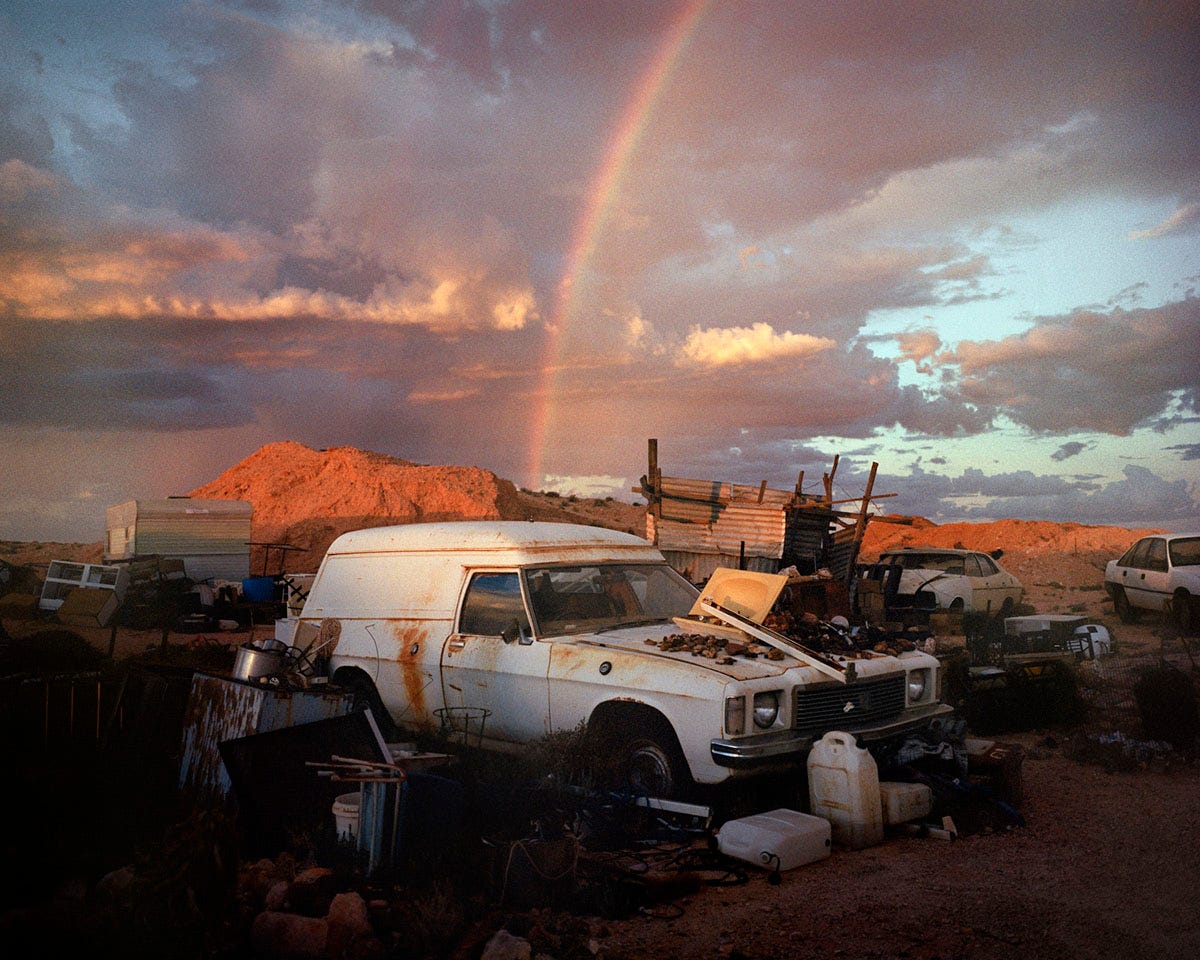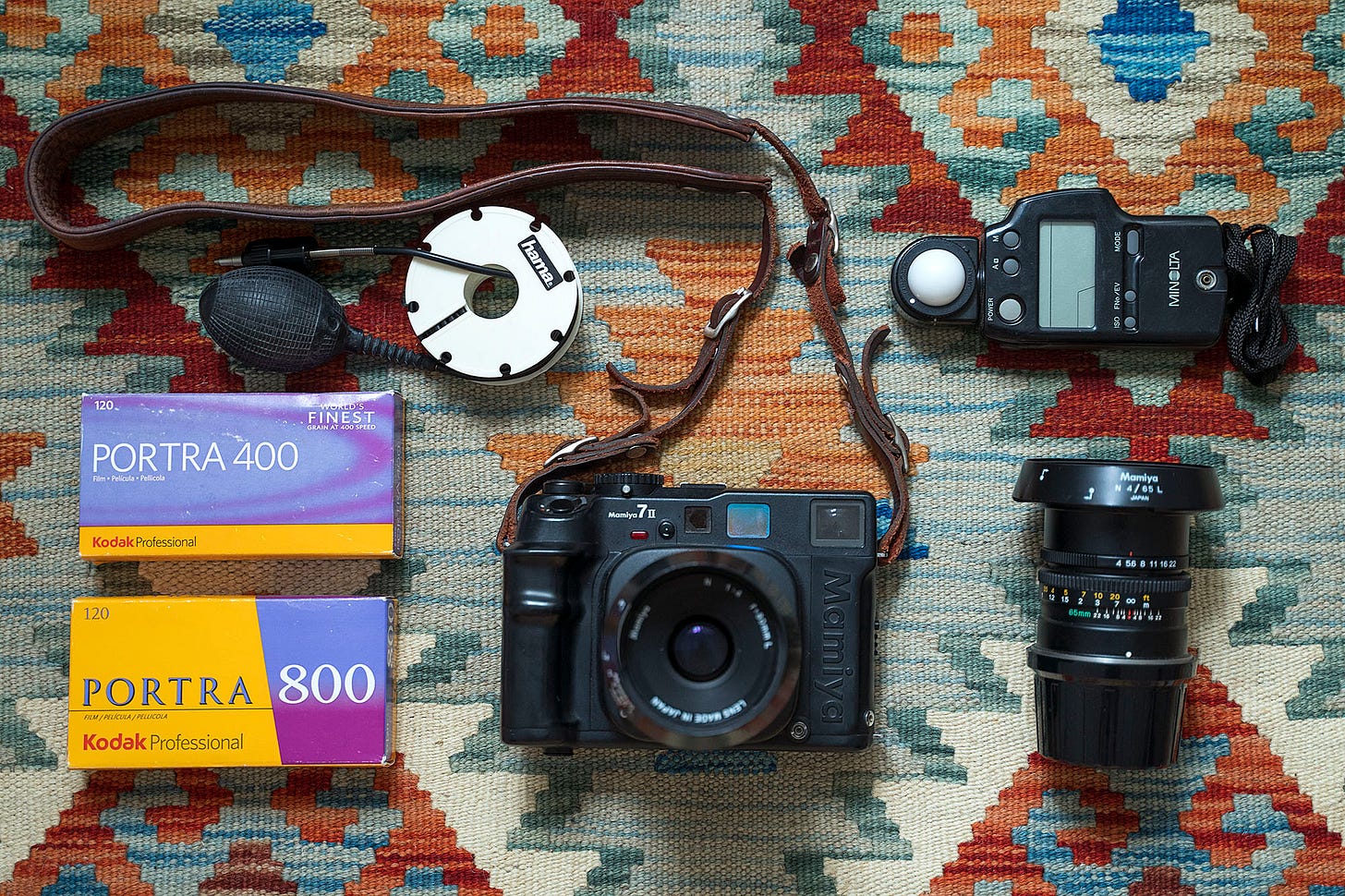I’m often asked what equipment I use when making personal work - in particular my current project in Australia. In addition to the gear itself, let me discuss my choice to complete this work on film.
Working for weeks at a time without being able to review the photographs I've made forces me to process my experiences and meditate on a narrative over a protracted period of time. From each day to the next, instead of editing and taking stock of the photographs I make like I would working digitally, I’m responding slowly to my experience of place and time.
The process of making photos on film is a way of tricking myself into slowing down to see a person and feel a landscape. It’s a luxury compared to working on an assignment, but a luxury that allows me to make a picture less concerned with the perfect moment, and more about capturing a feeling.
My memories of the photographs I make each day become abstract and fractured; I don’t know exactly what rests on my film emulsion. I am forced to build on an imagined story as I enter new days and scenarios. I percolate and dream and become less concerned with the photography and more engaged with the experience - the image becomes a byproduct of the journey and process, and the cumulative experience informs the tone and feel of the work.
One could argue that instead of working on film I could just work digitally and not review the work, simulating the process I’ve described. But there’s an additional layer of slowing down with film - the ten frames a roll, the changing of each roll, the manual nature of metering and exposing. It makes the photography harder.
Equipment
Mamiya 7 II - Medium format 6x7 camera
Mamiya N 80mm f/4 lens
Mamiya N 65mm f/4 lens
Minolta Auto Meter IV F Light meter
Kodak Professional Portra 400 120 film
Kodak Professional Portra 800 120 film
Air Shutter Release - 20' (6 m)
The Mamiya 7 is my tool in Australia because it's light and portable. Last week I rode a motorbike for 9 hrs on a cattle muster and hung it across my torso. For the majority of my work I use an 80 mm lens because it feels like a natural viewpoint, not dramatically wider than a human field of vision. It sits somewhere between a 35mm and 50mm focal length lens of a 35mm format camera. If I need to photograph in a small interior space I sometimes use the 65 mm so I can document the entire space or person within it.
My film choice is Kodak portra. It has a warm color to it that suits the bright and warm light of the Australian bush. Many films, including Kodak, are rated by the manufacturer at a speed which isn't a true ISO/ASA rating for the maximum tonal range. In reality they are 1/3 to 1 stop slower than what the box says, so they over-expose the film by ⅓ stops - rating 400 at 320, or 800 at 640. This gives me a neg that has a higher contrast and detail.
Got any questions about this gear? Let me know in the comments.



Great set up Adam. I love shooting Portra 400 at 200, just brings out so much detail.
Beautifully said mate. Your work is very emotive!